Acer’s first foray into the world of GPUs is a promising indicator of things to come
- Manufacturer: Acer Predator
- Model: Bifrost Intel Arc A770 16GB
- Test setup: Acer Predator Orion 7000 PO7-650
- Price when reviewed: £449 (MSRP) – £399 Retail
- GPU Supplied by: Acer UK
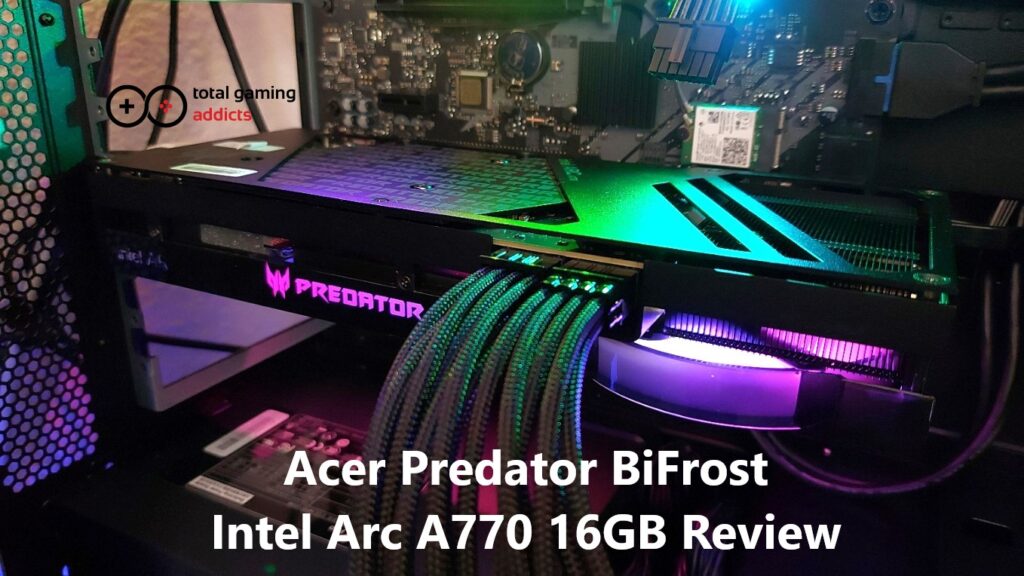
Acer Predator Bifrost Intel Arc A770 Review
Amazingly, this is Acer Predator’s first venture into the world of bespoke PC components. They’ve been making stunning prebuilt systems for decades, and we’re huge fans (as anyone who reads our reviews will surely know). What has always surprised me is that Acer doesn’t manufacture more of its own components. Yes, they have their AeroBlade 3D fans and stylish cases, along with rebadged AIO coolers, MOBOs, RAM and GPUs, but the Bifrost Arc A770 is Acer’s first fully designed and engineered GPU, and boy do I want them to make more.
Addressing the elephant in the room immediately, “Why not an Nvidia card?” Well, basically it’s licensing. It’s not as simple as just deciding you want to make your own branded GPUs and going for it, you need the approval of Nvidia, AMD, or in this case, Intel. Acer very much wants to manufacture their own RTX or Radeon cards, but they need approval first. When those manufacturers see what Acer has done with Intel’s A770 series GPUs, it can only be a matter of time before we see Acer Predator-branded RTX and Radeon cards, and I can’t wait.
No matter how good Acer is at optimising its designs, however, it can’t overcome the native shortcomings of the Intel cards. DX12 support is patchy (some games outright refused to run in DX12), and earlier implementations (DX9 and CS:GO, as a notable example) have only recently been patched to run at acceptable frame rates. Be that as it may, the vast majority of the issues are driver related, and as Intel has repeatedly proven, they are improving at a phenomenal pace.
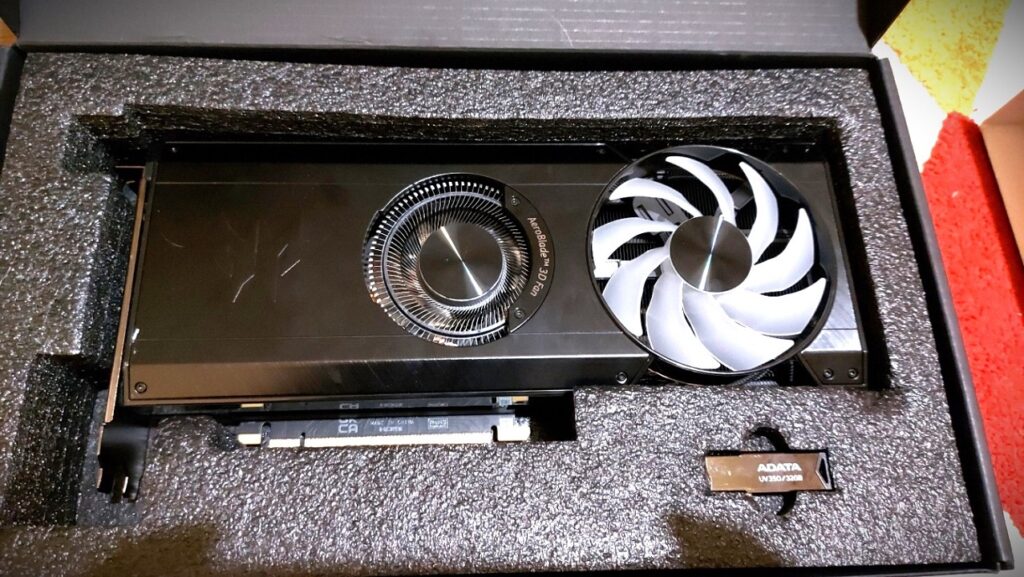
If we were to average out the performance across every game tested, you can expect somewhere between RTX 3060 and RTX 3060 Ti performance, however, this doesn’t paint a full picture. In some cases, the Acer A770 outperformed an RTX 3070 at 4k and 1440p resolutions, which is far beyond what I expected. Conversely, in games where DX12 didn’t work properly or where DLSS was available but XeSS wasn’t, the fps results skewed massively in favour of Nvidia. This makes it very hard to ascertain the performance level of Acer’s first GPU fairly.
The shortcomings of the Intel A770 have been widely documented and reviewed, of course, but it’s been fairly unanimous that they are improving at a rate of knots. With that in mind, I’m reviewing this GPU based on how well Acer has handled the hardware they had to work with, rather than the Intel Arc series as a whole (though I’m very impressed with the potential that’s been shown).
The biggest takeaway from this is that Acer has proven that it can craft components with an attractive aesthetic, distinctive design and impressive thermal management, whilst still keeping the price below that of other manufacturers on the market.
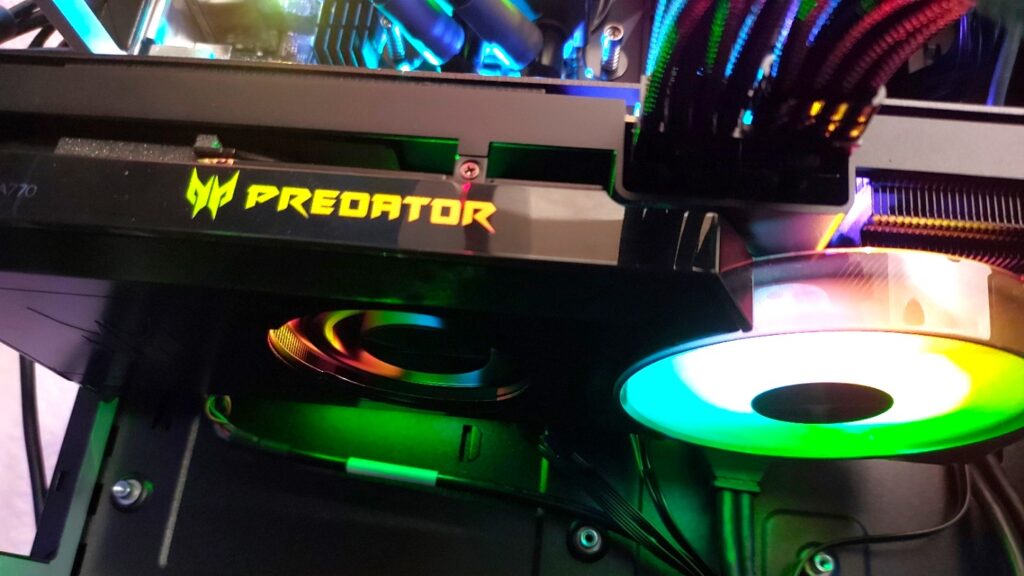
Would I choose an Intel Arc A770 for my own system?
Maybe not… Yet.
As it stands, there are too many games that either don’t work properly with DX12 or run below their potential with the A770, but again, this isn’t down to Acer. Given the rate of upgrades and optimisations, however, even if you do pick up the Predator A770 now, you can comfortably run the majority of games well above 60 fps at 1440p Ultra settings, with more sure to follow. Granted, it’s a tough ask, expecting someone to purchase something on the promise of performance yet to come, but the potential is there.
That being said, if you’re upgrading from an older PC with something like a 10-series GTX card, a 1660 or even an RTX 2060, the A770 is still a significant upgrade, especially at higher resolutions. If you’re waiting for either a more reasonably priced RTX 40 series card or possibly even the next generation, the Predator A770 would make a sensibly priced and perfectly capable stop-gap. I mostly play new(er) games, and our benchmarking had the Acer A770 performing almost as well as (and sometimes better than) the RTX 3060 Ti, but for less money.
Playing at 1080p the Acer Predator A770 is more than enough card to last you a few years. You can also fairly reliably hit 60 fps at 1440p, too, and with enough VRAM for the most memory-intensive games, this is a great choice for mid-range gaming. I’d only imagine the performance to get better as Intel releases more driver updates, but unfortunately, we’re now back working with potential performance, rather than proven stats.
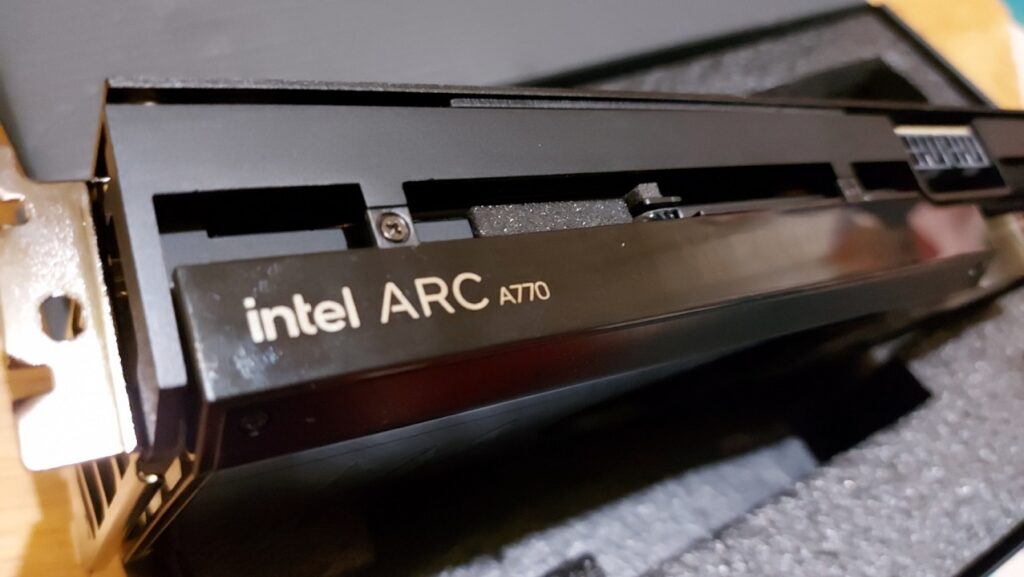
Would I buy an Acer-branded GPU for my next system?
Absolutely. The Acer Predator Bifrost Intel Arc A770 represents a small but noticeable performance upgrade over the reference card, with an attractive design, reliable factory overclocking and substantially improved cooling. Their presentation is on point, and if my years testing Acer systems is anything to go by, reliability should be great. Even if they don’t initially make waves with their first releases, they can always add these cards to their excellent prebuilt systems, and I’m confident that Acer GPUs will soon be well regarded in the same way other OEM manufacturers are.
Design and build
I could pluck out a handful of GPUs from the same generation and you’d struggle to identify which was which in many cases, but Acer’s asymmetric fan design is immediately distinctive, and that’s before you get to the top surface and its Predator-stamped logos. Throw in the assignable aRGB and you’ve got a fantastic-looking GPU.
The Predator A770 has dual 8-pin PCIe connectors, with a recommended PSU output of 650W, which surprised me a little. This is higher than both the RTX 3060 and 3060 Ti, with recommended PSUs of 550W and 600W, respectively. The actual power output of the Predator A770 is rated at 210W, and 235W with the OC turned on, and you can easily flick between OC and stock settings with Acer’s app.
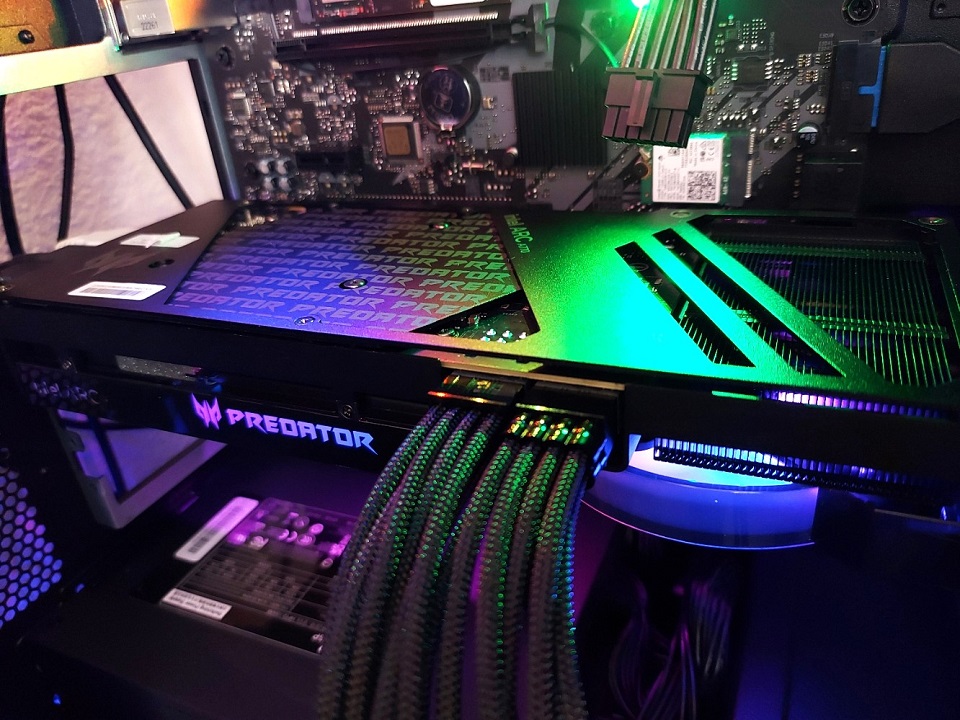
The more significant elements are inside, though. The Predator A770 uses an Acer FrostFlow fan and an AeroBlade 3D fan, which is now in its fifth generation. In Acer’s laptops, I’ve been impressed by not only the volume of air they can move but also how quiet they are in operation. The asymmetric fans are complemented by a vapour chamber, which is more commonly seen on laptops or products like the new Xbox consoles.
As it turns out, that asymmetric fan design is more than just for looks. Acer’s AeroBlade 3D fans have already proven to be effective on their laptops, but with this GPU, have they spread their wings (inspired design) and flown?
Sort of – the thermals weren’t too bad on the Predator BiFrost A770, and after a lengthy GPU-intensive gaming session, the temperatures averaged 75°C with a peak of 78°C. The new 40-series cards, and specifically the RTX 4090 that I swapped out of the Orion 7000, ran at a much lower 65°C in the same case. Compared with the RTX 3060 Ti, 3070 and 3080, though, these temps are in the same ballpark and shouldn’t be cause for concern.
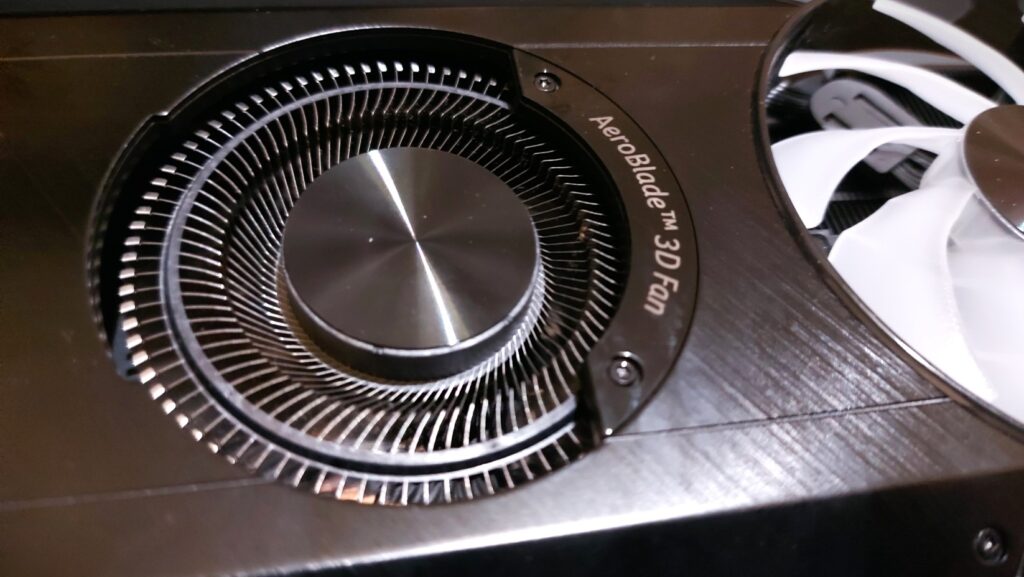
In terms of noise, the idle fan volume was barely noticeable above the regular system fans in our test system (Predator PO7-650). Under load, the volume rose, but it wasn’t noticeable above the accompanying increase in the AIO fans. There’s also a turbo mode, but much like in their desktops and laptops, the Turbo mode is agonisingly loud without much benefit. Other manufacturers’ turbo modes raise the ceiling for fan speeds, but they won’t necessarily always run at this speed. With the Predator Arc A770, Turbo simply ramps the fans up to 100% and calls it a day. I saw a reduction in peak thermals of a few degrees, but it’s not worth it for the deafening noise that accompanies it.
This could be a good card for smaller form-factor PCs, as the central fan and rear exhaust of the GPU would help move air from a warm case where airflow is harder to generate. This could hint towards Acer planning on fitting these cards to something like the Orion 3000 desktops, which typically only have a few fans.
As for connectivity, I have zero complaints here. Video connections comprise of a single HDMI 2.1 port and 3x DisplayPort 2.0 connectors. HDMI 2.1 is more commonplace now, but DP 2.0 is far newer and capable of running 8K at 60 fps without DSC (compression). Granted, that’s far higher than games will be able to run, but even running a desktop at higher resolutions and frame rates can significantly improve your day-to-day experience.
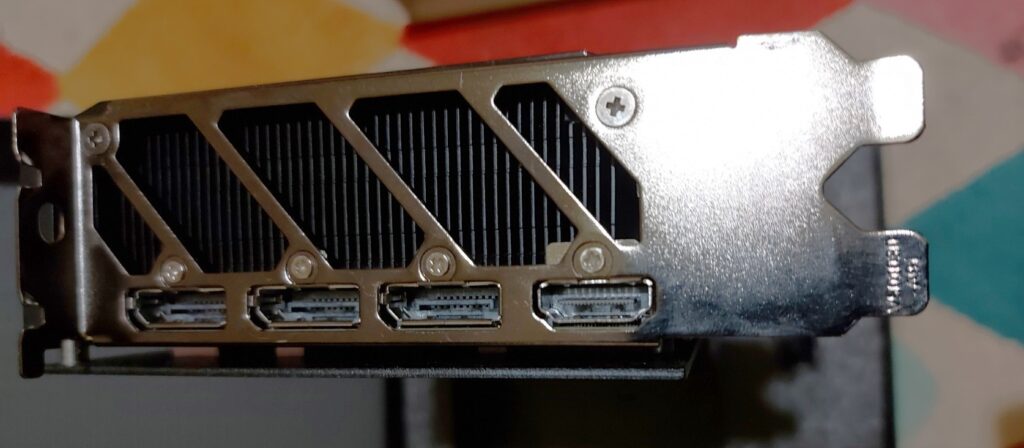
Performance
There are dozens of frame rate comparisons out there for the A770, so I won’t go into too much detail. Performance is improving, but it’s worth looking for specific results for games you want to play, because the state of the drivers means you can’t guarantee performance similarities between games like you can with Nvidia or AMD GPUs.
I would usually show direct comparisons in our reviews, but without like-for-like hardware on the test bench, these results could be misleading and would largely be meaningless. The following results are, however, representative of what the A770 can achieve with modern components backing it up.
Test system:
- Acer Predator Orion 7000 PO7-650
- Intel I9-13900K w/240mm AIO
- 32GB DDR5-4800
- 1200W PSU
- PCIe4 NVMe SSD
Note: since writing this review, further updates have been released to the A770 which should have improved compatibility and performance across a number of titles – Intel isn’t messing around!
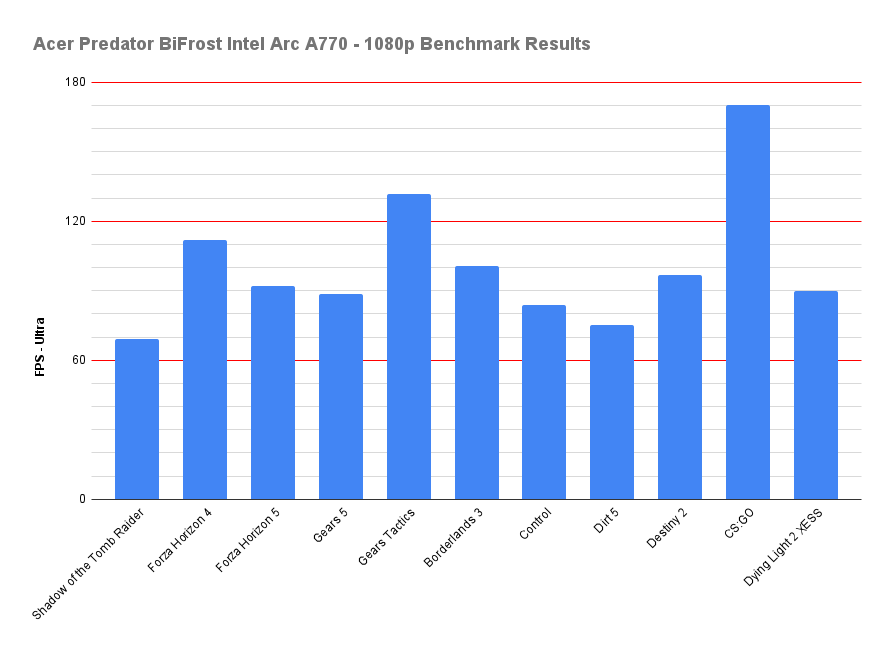
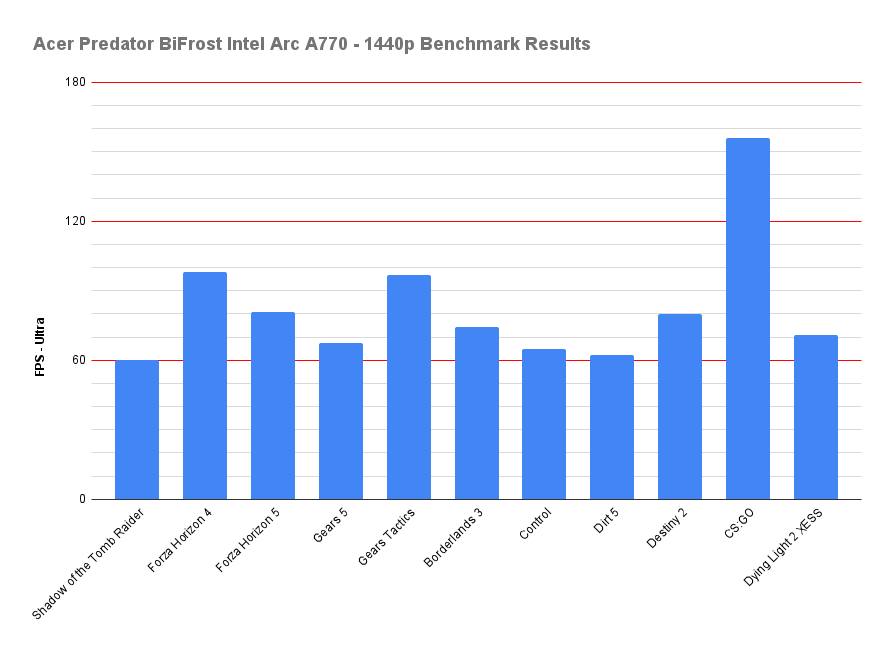
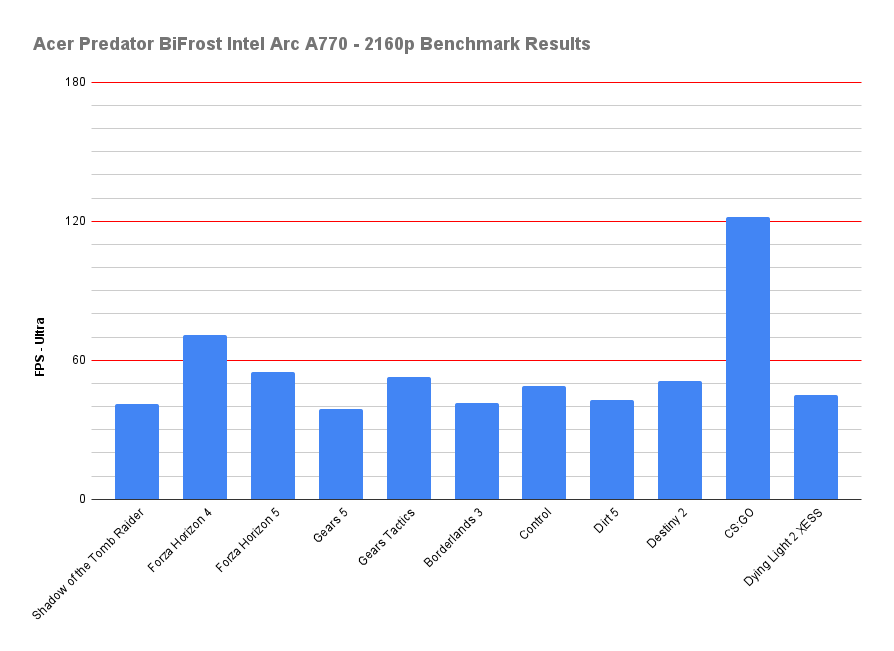
As mentioned, I don’t have true like-for-like comparison systems, but as a rough guide, the Acer Predator A770 sits closer to the 3060 Ti than the 3060, at least on the games we used for testing, anyway. For the asking price of £400 (which is the same as the A770 LE), the Acer Predator BiFrost A770 16GB could be a compelling option.
Summary
The future for Intel GPUs looks promising, especially with Battlemage on the horizon, but the current GPUs are up against some stiff and equally affordable competition. If you do go for the Arc A770, I’d highly recommend opting for the Acer Predator BiFrost A770, as there are a few FPS to be gained from the overclock and the Acer GPU looks so much better than Intel’s LE offerings.
Personally, with the RTX 4060 soon to be announced, and even the still-potent 3060 Ti available, with much better and proven driver support, I wouldn’t recommend the A770 for most gamers. I would, however, recommend buying Acer-branded GPUs in general. The build quality is excellent, the price is right, and if they can get licensing to produce the Battlemage and/or Nvidia and AMD GPUs, Acer could become a highly desirable GPU manufacturer.
